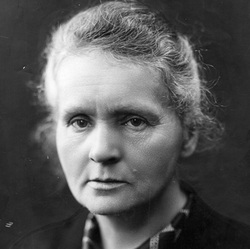|
2/26/2014 0 Comments STEM Women in History! by Nora Dagher Marie Curie A well-known woman in the historical STEM field is Marie Curie, a Polish and naturalized-French physicist and chemist. Curie is famous for her Nobel Prize in Physics (1903), Davy Medal (1903), Matteucci Medal (1904) and the Nobel Prize in Chemistry (1911). Curie's main achievements included a theory of radioactivity, techniques for isolating radioactive isotopes, and the discovery of two elements—polonium and radium (polonium was named after her home country Poland). The Curie Institutes in Paris and Warsaw remain major centers of research and discovery, mirroring the first military field radiological centers established by Curie during WWI. Despite her achievements in the scientific world, Curie died due to aplastic anemia brought on by exposure to radiation, mainly due to the mobile X-ray units created by her. Curie has become an icon in the scientific world and has received international accolades. Poland and France declared 2011 the Year of Marie Curie, with the UN declaring that it would be the International Year of Chemistry. She was the first woman to win a Nobel prize, the first person to win two Nobel Prizes, the woman to win in two fields, and the only person to win in multiple sciences. She has even become a pop culture figure, with her name and face recognizable in all avenues of society. (image link: http://www.biography.com/people/marie-curie-9263538)
0 Comments
Leave a Reply. |
WELCOME, UMICH SCIENTISTAS!
CAMPUS PICS
WHAT'S NEWUPCOMING EVENTSPAST POSTS
October 2022
SORT BY TAG |
The Scientista Foundation, Inc. All Rights Reserved © 2011-2021 | Based in NY | [email protected]
The Network for Pre-Professional Women in Science and Engineering
The Scientista Foundation is a registered 501(c)(3) -- Donate!
The Network for Pre-Professional Women in Science and Engineering
The Scientista Foundation is a registered 501(c)(3) -- Donate!


 RSS Feed
RSS Feed